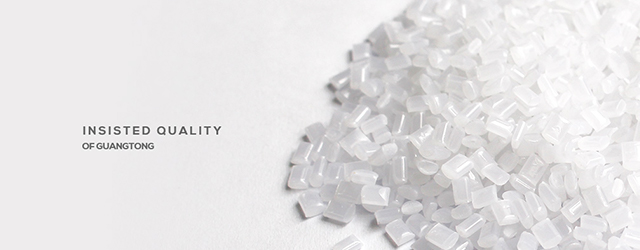GUANGTONG
R&D and quality control
�:
About OEM
Key words�
Learn about OEM:
The basic meaning of an OEM (Original Equipment Manufacturer) is that a manufacturer makes products and product accessories for a manufacturer according to the requirements of another manufacturer. It is also referred to as a contracted production or authorized OEM, commonly known as "OEM." That is, brand producers do not directly produce products. Instead, they use their own “key core technologies” to design and develop new products, control sales and sales channels, and have limited production capacity. They do not even have production lines and factories. Production and sales volume, in order to reduce the risk of the new production line, and even to win market time, through contract ordering commissioned by other similar product manufacturers, set the product at a low price buyout, and directly paste their own brand name. This kind of cooperation method that entrusts others to produce is the OEM, the manufacturer that undertakes this processing task is called the OEM manufacturer, its production product is the OEM product.
The characteristics of an OEM are: Technology is outside, capital is outside, market is outside, and only production.
Why OEMs are going global?
This is due to the social division of labor in production. In the industrial society, well-known brand companies are generally willing to find other companies for OEM or ODM because of considerations such as manufacturing costs, convenience of transportation, and saving development time. Those manufacturers with low brand awareness, limited mastery of sales channels and strong production capacity are more willing to accept production orders with less risk.
Under the fierce competition situation of the surplus economy, production-oriented companies are increasingly inclined to abandon the free brand and choose OEM-OEM. The fact that the dispute between the middleman-commercial enterprise and the production enterprise is an indisputable fact. When sellers in the market point and face pattern are deep enough enough, naturally, sellers will inevitably squeeze profit space to production-oriented enterprises, especially those small and medium-sized production enterprises will face a very serious fact. , Or stick to its own brand sit still, or choose the middleman brand to survive.
From a worldwide perspective, only a few production-oriented companies have survived while adhering to the development path of their own brands, and more companies have tasted the connection with the brands of distributors.
OEM benefits:
1, for the well-known brand companies. This approach can be regarded as a strategy for pursuing profit maximization. The earliest OEM in the world came from the apparel industry. Many well-known garment companies in developed countries, in order to reduce costs and improve the competitiveness of their products, have gradually expanded their production bases overseas, entrusted local manufacturers to manufacture them, and then sold them under their own names in the market.
This reduces the risk of expansion of the market by reducing the amount of funds used by the entrusted companies. Compared with self-promotion, mergers, joint ventures, and mergers, OEM commissioned processing accounts for the least amount of money for branded companies. Increase the speed with which new brand enterprises can intervene in the market. "OEM" is a good choice for quickly occupying the market in the short term. It is a good choice to effectively reduce risk without losing the market.
Many world-class home appliance manufacturers have changed their business model from large-scale production to mass customization. Through OEM, you can quickly complete the global coverage of the company's brand, but also can reduce investment costs and investment risks.
OEM is also an important means for foreign brands to explore the Chinese market. The specific approach is what we usually call “three to one supplements”: incoming materials, samples, equipment, and compensation trade. As the global economic integration trend continues to strengthen, foreign brands will also enter the Chinese market. The popularity and recognition of these brands in the Chinese market are still not very high, and their own factories are facing long-term problems and high costs. Therefore, the use of the relatively surplus production capacity of China's existing production lines to conduct contracted production is a short cut to the Chinese market.
2. For the entrusted enterprises, "OEM" has given full play to idle production capacity, equipment depreciation has been realized, unit product production costs have decreased (including the company's products), and employees' income has been guaranteed. . "OEM" has promoted the technological progress of the enterprise, accelerated the speed of equipment replacement, and trained a group of technical experts and technical staff. "Obsolete" helps to improve the management level of enterprises and entrepreneurs' management capabilities. It will help develop its longevity in specialized production and increase its competitiveness in the professional production of the industry.
Doing an OEM can not only earn money that was not originally earned by you, but also learn the operating methods and experience of many well-known companies.
OEM also has risks
(A) Legal Risk
The OEM contract between our domestic companies is too simple. The foreign brand-name licensing agreements often have a thick one, from equipment to process, from standard to quality, from parts to complete machines, from price to market, from service to maintenance, from delivery cycle to parts supply period, from From payment to delivery, from inspection to acceptance, they have made very perfect requirements, and they are very resistant. However, domestic enterprises tend to be successful overnight. This situation can easily lead to more disputes and difficulties in mediation. Therefore, we must guard against destroying the market and shoddy in operation.
(B) Economic risks
Due to the lack of market forecasting ability, due to Party A’s inaccurate estimation of the market’s distribution ability, Party A’s reduction in ordering volume, and due to the inertia of Party A’s plan, Party B’s difficulty in reversing after a major market change caused a large backlog of parts and raw materials. Funds are occupied. The stability of Party B's production is poor, it is difficult to control its own destiny, lack of development stamina, and more importantly, it is less profitable. For example, the United States "Barbie" toys entered the Chinese market, priced at 329 yuan, while the processing of a factory in China for each processing only a processing fee of 4 yuan.
(C) Brand Risk
Brand enterprises should be particularly cautious when selecting manufacturers. We must select those who have strength and trustworthy partners to ensure the quality of products and enhance the competitiveness of products in the market.
In this case, the entrusted company can allow the company to eat, but it does not necessarily allow the company to eat well. Because in the development, production and sales of products, the profit of the production process is the lowest. Some companies put their prices low while placing orders. Although the amount of such orders is large, the profits are thin and there is no room for growth. Moreover, when an enterprise receives a big order from a certain brand, the factory's production capacity is also bought out in a certain period of time. In this way, its own products can not be produced, and its brand's influence in the market will be weakened or even disappear.
Learn about ODM:
The literal translation of ODM (Original Design Manufacturer) is "original design manufacturer". ODM means that after a manufacturer designs a product, in some cases it may be fancyd by other companies, requiring the brand name of the latter to be used for production, or slightly modifying the design for production. This will allow other manufacturers to reduce their own development time. Manufacturers that undertake design and manufacturing operations are called ODM vendors. The products they produce are ODM products. The
ODM manufacturers design product plans can be offered to the brand owner by buying or not buying:
1. Buyout: The brand owner buys off the design of a certain model of ODM's off-the-shelf product, or the brand owner alone requires the ODM manufacturer to design a product plan for itself.
2. Do not buy out: The owner of the brand does not buy out the design of a certain model of the ODM manufacturer. ODM manufacturers can sell the same type of product to other brands at the same time. When these two or more brands share a design, the difference between the two branded products lies mainly in appearance.
The difference between OEMs and ODMs is that OEM products are branded and customized for a branded company, and can only use the name of the brand after production, and must not be named after the manufacturer's name for production. The ODM depends on whether the branded company has purchased the copyright of the product. If not, manufacturers have the right to organize their own production.
Learn about OBM:
OBM (Original Brand Manufacturer), the original brand manufacturer, is a popular term in recent years. Refers to the manufacturer's own creation of product brands, production, sales of products with their own brands. Some people think that the acquisition of existing brands and the acquisition of brands by franchising can also be considered as part of OBM.


